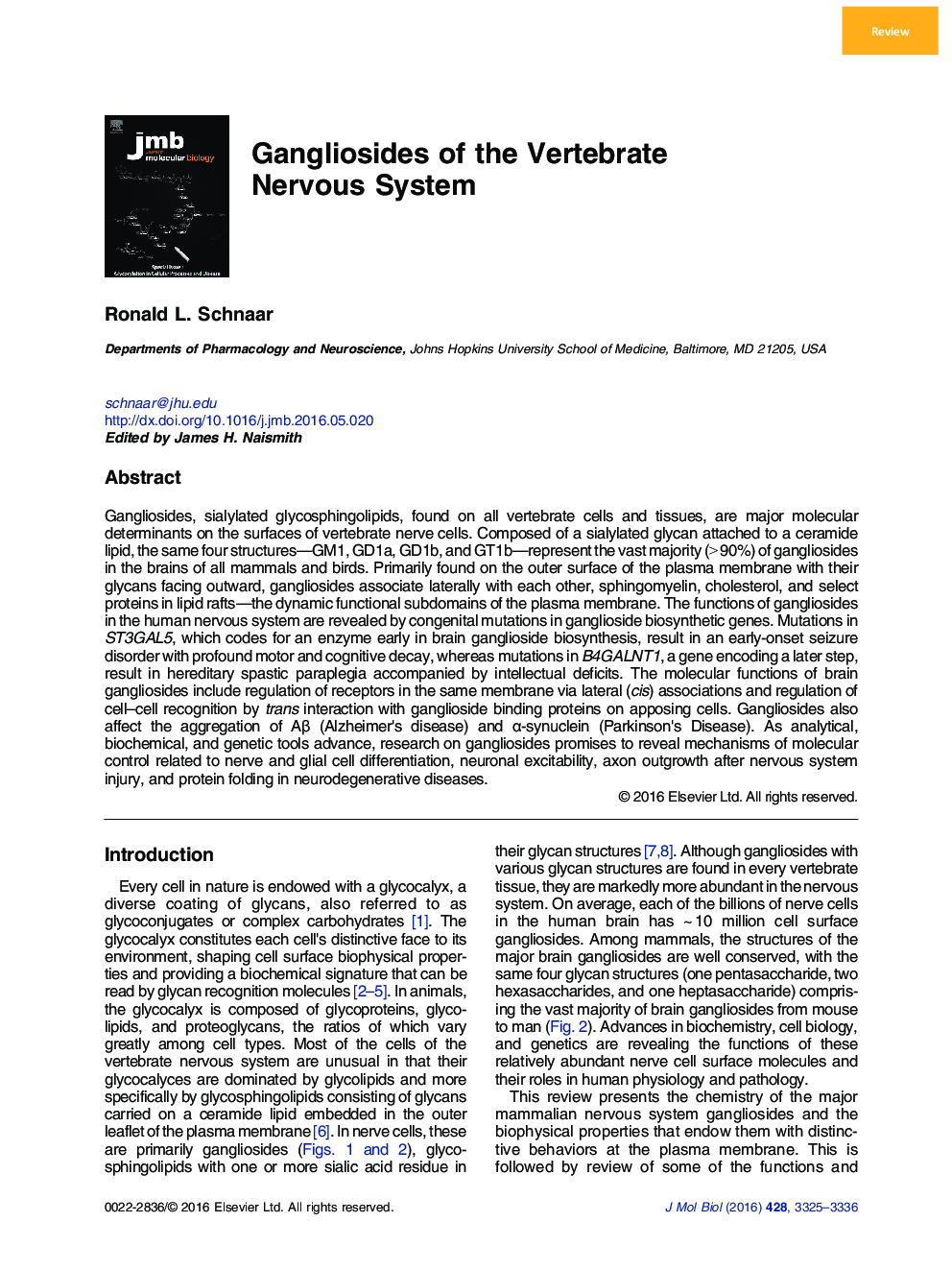| کد مقاله | کد نشریه | سال انتشار | مقاله انگلیسی | نسخه تمام متن |
|---|---|---|---|---|
| 2184256 | 1095815 | 2016 | 12 صفحه PDF | دانلود رایگان |

• Gangliosides, sialylated glycosphingolipids, are major cell surface molecular determinants on all vertebrate nerve cells.
• The same four ganglioside structures GM1, GD1a, GD1b, and GT1b comprise the vast majority of brain gangliosides in all mammals.
• Gangliosides regulate membrane receptors via specific molecular interactions with proteins on their own membrane (cis) and mediate cell–cell recognition via specific binding to glycan recognition proteins on apposing cells (trans).
• Among their functions, gangliosides regulate cell differentiation, modulate cell signaling, stabilize axon–myelin interactions, and affect protein aggregation related to neurodegenerative diseases.
• Inherited mutations in ganglioside biosynthetic genes result in seizures, motor neuropathies, and intellectual deficits.
Gangliosides, sialylated glycosphingolipids, found on all vertebrate cells and tissues, are major molecular determinants on the surfaces of vertebrate nerve cells. Composed of a sialylated glycan attached to a ceramide lipid, the same four structures—GM1, GD1a, GD1b, and GT1b—represent the vast majority (> 90%) of gangliosides in the brains of all mammals and birds. Primarily found on the outer surface of the plasma membrane with their glycans facing outward, gangliosides associate laterally with each other, sphingomyelin, cholesterol, and select proteins in lipid rafts—the dynamic functional subdomains of the plasma membrane. The functions of gangliosides in the human nervous system are revealed by congenital mutations in ganglioside biosynthetic genes. Mutations in ST3GAL5, which codes for an enzyme early in brain ganglioside biosynthesis, result in an early-onset seizure disorder with profound motor and cognitive decay, whereas mutations in B4GALNT1, a gene encoding a later step, result in hereditary spastic paraplegia accompanied by intellectual deficits. The molecular functions of brain gangliosides include regulation of receptors in the same membrane via lateral (cis) associations and regulation of cell–cell recognition by trans interaction with ganglioside binding proteins on apposing cells. Gangliosides also affect the aggregation of Aβ (Alzheimer's disease) and α-synuclein (Parkinson's Disease). As analytical, biochemical, and genetic tools advance, research on gangliosides promises to reveal mechanisms of molecular control related to nerve and glial cell differentiation, neuronal excitability, axon outgrowth after nervous system injury, and protein folding in neurodegenerative diseases.
Graphical AbstractFigure optionsDownload high-quality image (108 K)Download as PowerPoint slide
Journal: Journal of Molecular Biology - Volume 428, Issue 16, 14 August 2016, Pages 3325–3336